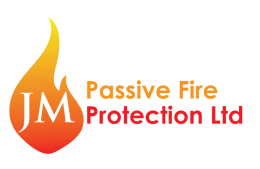What is an Intumescent Coating?
An intumescent coating is a specialized fireproofing material that expands when exposed to high heat, forming a thick, insulating char layer. This char protects the underlying material (such as steel, wood, or concrete) from extreme temperatures and delays structural failure during a fire, giving people more time to evacuate and reducing property damage.
Key Features of Intumescent Coatings:
- Heat-Activated Expansion:
- Typically expands 50 to 100 times its original thickness when exposed to temperatures of around 200–250°C (392–482°F).
- The expanded layer insulates against heat transfer.
- Non-Toxic and Safe:
- The materials used are generally non-toxic and safe for indoor environments before activation.
- Customizable Appearance:
- Often used in visible architectural elements as it can be applied in a smooth, aesthetically pleasing finish.
- Versatile Application:
- Suitable for steel, wood, concrete, and other construction materials.
- Can be applied via brush, roller, or spray.
Components of Intumescent Coatings:
- Binder: Holds the coating together and enables adhesion to the substrate.
- Intumescent Agents:
- Expand when exposed to heat.
- Carbon Source:
- Provides the raw material for the char layer.
- Blowing Agent:
- Releases gases to expand the char.
- Additives:
- Enhance performance, durability, or fire resistance.
Applications:
- Structural Steel:
- Protects against weakening at high temperatures.
- Common in high-rise buildings, industrial plants, and refineries.
- Wooden Structures:
- Delays the ignition of wood.
- Used in heritage buildings and modern wooden constructions.
- Tunnels and Bridges:
- Protects from heat generated during fires.
- Oil & Gas Industry:
- Applied on tanks, pipes, and equipment to mitigate risks from hydrocarbon fires.
Advantages:
- Lightweight: Adds minimal weight compared to traditional fireproofing methods.
- Decorative: Can be painted over or finished for aesthetics.
- Versatile: Works on various materials and structural types.
Limitations:
- Cost: Higher upfront cost compared to some traditional fireproofing methods.
- Application Time: Requires skilled labor for correct application and curing.
- Maintenance: May need reapplication or touch-ups depending on environmental exposure.
Key Standards and Certifications:
Intumescent coatings are tested to meet fire safety standards, such as:
- UL 263 or ASTM E119 (U.S.)
- BS 476 (UK)
- EN 13381 (Europe)
